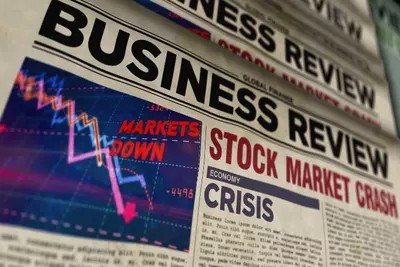As global markets reel from the shock of renewed trade tensions, investors, economists, and everyday observers alike are asking a familiar question: How bad is this going to get? The sudden, sharp decline in global stock indices over the past week has drawn immediate comparisons to the COVID-19 crash of 2020, with some even revisiting the tariff-driven tremors of former President Donald Trump’s first term.
To understand what’s happening—and where we might be headed—it’s helpful to examine history not just for context, but for clues. Financial markets have long been the pulse of global sentiment, reacting with near-surgical sensitivity to policy, uncertainty, and fear. But they also reflect resilience, often rebounding with unexpected speed.
The Present Storm: Tariffs and Tensions in 2025
This past week marked one of the most dramatic slides in financial markets since the onset of the COVID-19 pandemic. The Dow Jones Industrial Average fell by over 2,200 points on Friday, following a 1,679-point drop on Thursday—erasing over $6.4 trillion in market value in just 48 hours. The S&P 500 plunged 6%, while the Nasdaq officially entered bear market territory, dropping more than 20% from its December highs.
The catalyst? A fresh salvo in the U.S.–China trade war.
President Donald Trump’s administration announced sweeping new tariffs—including a 25% duty on all auto imports and a staggering 54% on goods from countries like China, Vietnam, and the European Union. China retaliated swiftly with a 34% tariff on American imports, sending a clear message: the era of decoupling is far from over.
Across the Atlantic, London’s FTSE 100 tumbled 5%, its worst one-day performance since early 2020. Europe’s Stoxx 600 index followed suit, as did major Asian markets.
March 2020: When the World Stopped
In February 2020, the S&P 500 reached a record high of 3,386.15. Just over a month later, it had lost a third of its value. The freefall, triggered by the rapid global spread of COVID-19, was the fastest 30% drawdown in history. Fear took over. Markets nosedived. Countries locked down.
But then came the response.
Massive monetary stimulus from central banks, coupled with trillions in government spending, flooded the system. In an almost surreal turnaround, the market bottomed out on March 23, 2020. By mid-August, just five months later, the S&P 500 had reclaimed its pre-pandemic highs.
The recovery was not just swift—it was historically unprecedented. Investors, fearing disaster, ended up participating in one of the fastest rebounds in modern financial history.
Trump’s First Tariff Era: 2018–2019
Today’s tariff drama isn’t Trump’s first. During his first term, the U.S. president frequently deployed tariffs as a political and economic tool. In March 2018, he announced sweeping duties on steel and aluminum imports. The Dow dropped over 700 points that day, reflecting investor anxiety over trade war escalation.
But unlike the COVID-19 crash, this downturn didn’t result in a bear market. Instead, markets see-sawed in response to headlines and countermeasures. By late 2019, optimism around a “Phase One” deal between the U.S. and China had helped markets stabilize and grow.
What’s different this time? In 2018, tariffs were disruptive. In 2025, they arrive in a context of already strained global supply chains, high inflation, and political division—turning a policy maneuver into a potential systemic risk.
How Much Has Been Lost—and How Long Might It Take to Recover?
Over $6.4 trillion in market value has already vanished in just two days. If the current decline continues and matches the COVID-19 crash in magnitude (a 30–35% drop), global stock markets could lose over $25 trillion in value before finding a floor.
But recovery won’t be solely about numbers. It depends on three key factors:
- Policy Response: Will central banks intervene with rate cuts or liquidity injections? So far, the Fed seems hesitant, signaling that inflation remains a priority.
- Geopolitical Resolution: Can the U.S. and China find a diplomatic off-ramp? Unlike a virus, this is a man-made crisis—and it can be undone.
- Investor Confidence: Market psychology is fragile. Once panic sets in, fundamentals take a back seat. But confidence can return just as quickly with the right spark.
If cooler heads prevail, we could see markets bottom and begin recovering within three to six months. However, if trade escalations continue and policy remains tight, the downturn could extend well into 2026.
Final Thoughts: More Than Numbers
Financial markets are the world’s most sensitive seismographs. They don’t just measure value—they measure trust. And right now, that trust is being tested by geopolitical brinkmanship, economic uncertainty, and historical memory.
Looking back at 2020 and 2018–19, we find a sobering but hopeful message: Markets can endure shocks and even thrive afterward—but only if leadership matches crisis with clarity, not chaos.
As we head into a potentially volatile summer, one thing is certain: history doesn’t repeat, but it rhymes. And for those watching the markets, listening closely to that rhyme may be the most important investment of all.
newshub
For more insights, follow our weekend reads and financial editorials at www.newshub-finance.com.











Recent Comments